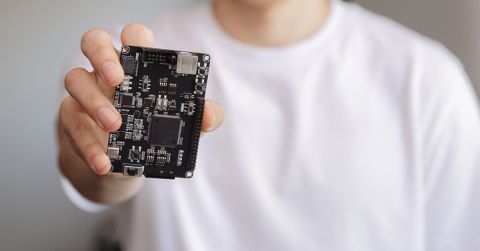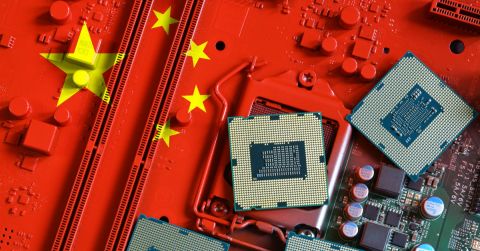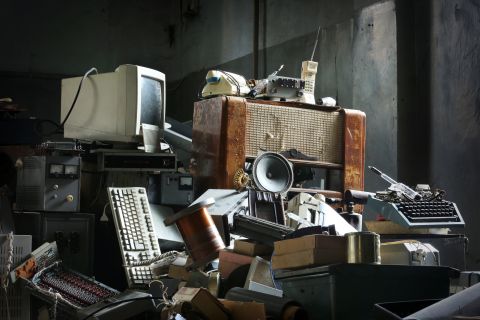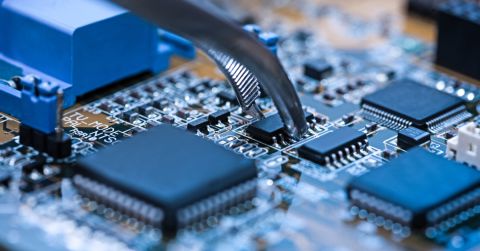What Are the Most Common Electronic Components That Fail?

When selecting components for new circuit boards, there is a major tendency to focus more on board-level reliability as if this will ensure component-level reliability and prevent parts failures. This is true to an extent: smart circuit board design and PCBA decisions can suppress or prevent problems that might cause a component failure. However, some components are simply more prone to failure than others in certain cases.
There is another practice that compounds the problem of failing components. For many products, there is a tendency to simply throw a board away or replace an entire board when a failure occurs, rather than to investigate the root cause of failure. Many failures can be linked back to one or more failed components, so it pays to know which are the most common electronic components that fail. It also helps to know what board-level problems can contribute to these common failures, and which alternative components should be used to ensure a longer system lifetime.
Most Common Electronic Component Failures
Without much more elaboration, let’s look at some of the common electronic component failures. As we’ll see, the common failures are not confined to specific components, it’s simply that the function, placement, and type of component can make it more prone to failure in various ways.
BJTs and MOSFETs at High Temperature
Unlike some other temperature ratings, where a component may continue to operate above the rated spec, MOSFETs will fail almost immediately if they exceed the rated junction temperature. Similar effects happen in BJTs. If the temperature of these components increases during operation, so does their on-state resistance, which then further increases losses and temperature, and so on…
This is known as an thermal runaway and is a positive feedback problem eventually leading to component failure. Thermal runaway is not something confined to MOSFETs, it also is known to happen in varistors and tantalum capacitors. This effect is rare in ICs, however, as they are more susceptible to stress from other sources.

Power MOSFETs include a die-attached heatsink to dissipate heat and help prevent overheating.
Components Vulnerable to Discharge or Power Surges
Power surges produce overvoltage (breakdown) in unprotected systems. The most obvious effect is on components like capacitors located at the input to a power rectification/regulation section, which can experience overvoltage and breakdown during a power surge. ESD is not exactly the same as a power surge, but it can be addressed with the same overvoltage protection measures.
ICs are more susceptible to large ESD events simply because of their place in a circuit board. This is why semiconductor manufacturers include ESD protection in their products. In addition, the IEC 61000-4-2 standard defines requirements for ESD protection to ensure product safety and reliability, so using components with integrated ESD are less susceptible to smaller ESD events.
Overstress and Overcurrent
While technically any component can fail due to these factors, they can occur in certain components whether or not an ESD pulse/power surge occurs. Internal latchups can occur in an IC without an ESD pulse being present simply due to inadvertent overstress in the design. This creates a low impedance path between the power rail and ground in the component, leading to overcurrent and overheating. Preventing this requires carefully selecting a power regulator that can maintain the appropriate voltage level required for the IC.
Moisture-Sensitive Components
Electronic components have a metric called moisture sensitivity level (MSL) that defines how fast the part can absorb water. MSL values range from level 1 (the part can be exposed to humidity indefinitely) to level 6. If moisture will be a major problem and potential cause of failure, try to include components with low MSL values. If you must include a high MSL component, consider a conformal coating; this will protect the component as well as the board from moisture, including oxidation.

Extreme corrosion is one danger of moisture exposure, but water can also ingress into component packaging in the process.
Temperature-Sensitive Components
All components are sensitive to temperature, and any device deployed in an extreme environment should have components with a broad enough temperature range. In addition to simply running too hot or too cold, thermal cycling and thermal shock are two factors that cause component failure. Under a thermal shock, BGA solder balls and multilayer ceramics are two components that are particularly susceptible to fracture. Thermal cycling is another known cause of fatigue failure in BGA solder balls, but it can also lead to fatigue failure in the wire bonds in ICs.
Pressure-Sensitive Components
This point it is quite important for any electronics deployed in a high vacuum or high-pressure environment. In particular, electronics deployed in underwater ROVs need to be carefully tested and inspected to ensure they will not be damaged at high pressure. Hermetically sealed ICs, electrolytic capacitors, powdered ferrites, and any other component with air gaps should not be used in high-pressure environments as they could implode.
Components for Protecting Your Circuits and Boards
From the above list, it should be apparent that there are no specific components that are simply more prone to random failure than others. Rather, there are certain situations that a system might encounter during which some components may be more prone to failure. Some of the failure causes encountered during a device’s lifetime, such as ESD or thermal environment, can be anticipated to ensure maximum reliability.
Since many of these failures rely on proper component selection, here are some guides to help you find the most reliable components for your designs:
If you’re wondering whether your parts are some of the most common electronic components that fail, don’t take chances with your designs. Instead, use the advanced search and filtration features in Octopart to find the parts you need. The electronics search engine features in Octopart give you access to updated distributor pricing data, parts inventory, parts specifications, and CAD data, and it’s all freely accessible in a user-friendly interface. Take a look at our integrated circuits page to find the components you need.
Stay up-to-date with our latest articles by signing up for our newsletter.









 Back
Back